| Recent Featured Videos and Articles | Eastern “Orthodoxy” Refuted | How To Avoid Sin | The Antichrist Identified! | What Fake Christians Get Wrong About Ephesians | Why So Many Can't Believe | “Magicians” Prove A Spiritual World Exists | Amazing Evidence For God | News Links |
| Vatican II “Catholic” Church Exposed | Steps To Convert | Outside The Church There Is No Salvation | E-Exchanges | The Holy Rosary | Padre Pio | Traditional Catholic Issues And Groups | Help Save Souls: Donate |  |
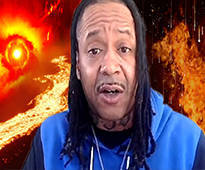
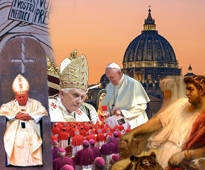
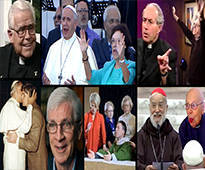
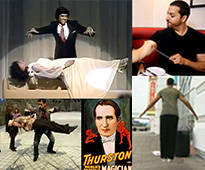


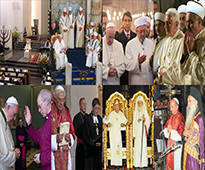


 " />
" /> " />
" />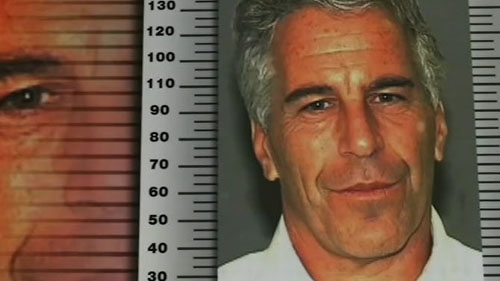 " />
" />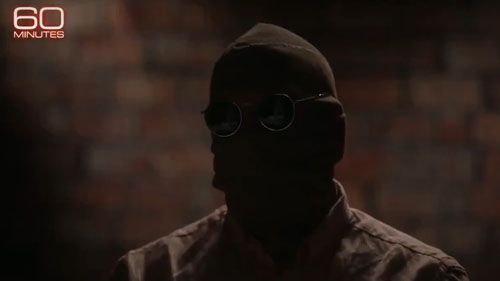 " />
" /> " />
" />




Part 3: Did John Paul II commit more heresies than Martin Luther? Yes.
By Bro. Peter Dimond, O.S.B.
Read other parts here: A Response to the Attack on Sedevacantism in The Fatima Crusader, Catholic Family News and The Remnant
IN THIS ARTICLE:
-THE ARGUMENT FROM MARTIN LUTHER AND THE “SIXTY DAYS” – A TRUE DISTORTION
-FERRARA COMPLAINS THAT THE SEDEVACANTISTS ACCUSE JOHN PAUL II OF MORE HERESIES THAN LUTHER
-THE FALSE ARGUMENT FROM THE CASE OF JOHN XXII
-CONTRADICTIONS AND THE CASE OF POPE HONORIUS
-FERRARA ON THE TEACHING THAT NO ONE CAN JUDGE THE POPE
-FERRARA’S RECENT INSTALLMENT: HE DOESN’T ADDRESS SEDEVACANTIST ARGUMENTS WITH ANY SPECIFICITY
-FERRARA IS STILL ASSERTING THAT THE VATICAN II ANTIPOPES HAVEN’T TAUGHT ANY HERESY!
-FERRARA DOESN’T ADDRESS THE FACT THAT THE PUBLICATIONS HE WRITES FOR AND ENDORSES PROVE THE VERY POSITION THAT HE IS ATTACKING
-FERRARA ATTEMPTS TO JUSTIFY THE POSITION OF THE SSPX, WHO IS COMPLETELY OUTSIDE OF HIS “POPE,” THUS PROVING THAT THE CATHOLIC CHURCH DOESN’T EXIST UNDER BENEDICT XVI
-FERRARA BRINGS UP A DISHONEST STRAW MAN: THE CASSICIACUM THESIS
*Emphasis in this article (including bolding, underlining and italicization, is not necessarily that of the quoted author and is usually my own).*
THE ARGUMENT FROM MARTIN LUTHER AND THE “SIXTY DAYS” – A TRUE DISTORTION
The non-sedevacantists think that they’ve got a good one in this argument from Mr. Ferrara. A non-sedevacantist who had read Ferrara’s article e-mailed us attempting to put it in our face, as if it were a knock-out punch to the “Enterprise.” But, as is the case with all heretics and their false arguments, when one is familiar with the facts involved it is easier to uncover their clever artifices, their subtle distortions and their clear errors.
Mr. Ferrara states that Martin Luther was given sixty days to retract his 41 heresies before suffering the penalty of excommunication. The impression that Ferrara gives is that Luther was not to be considered a heretic until after the sixty days elapsed. If that is not the meaning of Mr. Ferrara, then his statement has no value for his argument. In the footnote to this statement (Catholic Family News, p. 24, note 8), Ferrara states: “The [Sedevacantist] Enterprise evidently believes it can condemn the conciliar popes as heretics without even an opportunity to recant!” Therefore, Ferrara is attempting to show that Luther couldn’t be considered a heretic until after the sixty days (which gave him an opportunity to retract) had elapsed.
Ferrara’s understanding of this whole affair is completely wrong. This is proven by the fact that Martin Luther was declared a heretic by Pope Leo X in the very Bull Exsurge Domine, before the sixty days to recant even began.
This was before the sixty days began. All heretics are ipso facto excommunicated without any declaration. It was near the end of the Bull that Pope Leo X gave Luther a final sixty days to recant and repent, or else the full penalty of ecclesiastical punishment would be enforced on him as a public heretic.
What was this all about? In those days, Catholic states would imprison and even execute certain public heretics. After the Council of Constance officially declared that John Hus was a heretic, Hus was turned over to the civil power and burned at the stake. The same could have happened to Luther, so Pope Leo X was giving him a final sixty days to avoid such a possibility. One might say that Pope Leo X was giving Luther a final sixty days to recant and live.
That is why The Catholic Encyclopedia proceeds to point out that the enforcement of the provisions of the Bull was the duty of the civil power.
Martin Luther probably would have been burned at the stake or imprisoned if he had not escaped the territory aided by powerful friends.
So, we can see that the “sixty days” had a reality that was far different from the impression that Ferrara creates – as if Luther couldn’t have been denounced as a non-Catholic heretic until that time. To illustrate the “patent absurdity” of such a conclusion, here is a quotation from Luther well BEFORE the sixty days even began. Please tell me, dear reader, if this man could have been considered a Catholic at that time?
Or are we to believe – to borrow Mr. Ferrara’s phrase – that the man who uttered this quotation (well before the final sixty days were even issued) was a Catholic or could have been considered one? If such an idea isn’t “patently absurd,” then nothing is. Such an idea flatly rejects the following dogmatic teaching, in which we are taught that formal processes and judgments are not necessary for ipso facto excommunications to take effect. They are very often, as in the case of Luther, formal recognitions of the ipso facto excommunication that has already occurred.
The formal process and judgment is nice to have, especially when the civil power may be issuing death sentences for heresy; but the formal sentence or process is not necessary for Catholics to have in order to denounce a manifest heretic as a non-Catholic – a manifest heretic who has shown himself to be familiar with the Catholic teaching he obstinately rejects. When the heresy is so manifest, as in the case of Luther or Benedict XVI (who says we shouldn’t convert non-Catholics and takes active part in Synagogue worship), Catholics not only can denounce him as a non-Catholic without a trial, but must do so. That is precisely why St. Robert Bellarmine, Doctor of the Church, in addressing this precise question, states unequivocally that the manifest heretic is deposed and can be considered a non-Catholic with no authority before any “excommunication or judicial sentence.” In this context, St. Robert uses the word “excommunication” to refer to the ferendae sententiae penalty (the formal declaration by the Pope or judge).
Let me repeat that: WHICH MEANS BEFORE ANY EXCOMMUNICATION OR JUDICIAL SENTENCE! So, we can see that Mr. Ferrara, in presenting this case as an argument, has gotten it all wrong. His conclusion would – and does – make a complete mockery out of the unity of Faith in the Church. In case we have forgotten, there is a unity of Faith in the Catholic Church (as in one, holy, Catholic and apostolic.)
According to Ferrara’s conclusion, Catholics would have to affirm communion with a man who publicly avowed that he wanted no communion with the Catholic Church, and held that the whole Pontifical law is a swamp of heresies. To state that Catholics should hold communion with such a manifest heretic because no process against him had been completed, is an utter mockery of Catholic teaching, Catholic Tradition and Catholic sense.
Likewise, according to Ferrara, one must affirm communion with Benedict XVI, a man who says that Jesus Christ is not necessarily the Messiah and that we shouldn’t convert Protestants. The unity of Faith doesn’t exist in such a religion; it is certainly not the Catholic religion.
The only thing that Ferrara has gotten right in this argument is to put Benedict XVI in the same category as Luther. The two German heretics certainly deserve to be compared. Luther and Ratzinger (Benedict XVI) are both among the worst heretics with which the Church ever contended, the latter being an admirer of Luther.
Benedict XVI is not only an admirer of Luther, but a promoter of his worst heresies. Benedict XVI approved – and is actually credited with saving – the Joint Declaration with the Lutherans on Justification. This agreement declares that the worst Lutheran heresies on Justification – including Justification by faith alone and “at the same time just and totally sinner” – do not fall under the condemnations of the Council of Trent.
No matter where Chris Ferrara and the non-sedevacantists want to turn, they are refuted. If they want to bring up the dogma of the Papacy, we can prove that Benedict XVI denies the Papacy. If they want to bring up the case of Luther, we can prove that Benedict XVI accepts Luther’s heresies. If they want to bring up the unity and visibility of the Church, we can prove that Benedict XVI totally rejects the unity of the Church.
It is precisely because we believe that the Papacy is binding, and that the heresies of Luther must be rejected, etc. that we correctly regard the Vatican II Antipopes as non-Catholics. Ferrara cannot see that by defending Benedict XVI he is defending a new version of Luther. But this version of Luther (Benedict XVI) goes to the Synagogue and praises Islam – something that even Luther himself would denounce as apostasy!
That brings me to my next point...
FERRARA COMPLAINS THAT THE SEDEVACANTISTS ACCUSE JOHN PAUL II OF MORE HERESIES THAN LUTHER
First, Ferrara has it wrong: it was Pope Leo X who condemned the 41 propositions of Luther, not the Council of Trent.
Second, the fact that John Paul II committed more acts of heresy and made more heretical statements than Luther makes perfect sense. This is because John Paul II engaged in an entire genre of heresy which Luther never did: non-Christian religions. John Paul II’s apostasy with non-Christian religions gave him a much larger field of heresy in which to play than Luther ever had, and boy did he use it. John Paul II engaged in apostasy with everything from Voodoo to Jainism. Did Luther ever pray with Animists? No, but John Paul II did. Manifest and despicable heretic that he was, Martin Luther at least believed that it was necessary to believe in Jesus Christ. This cannot be said about John Paul II.
Would Martin Luther have ever said the following?
Martin Luther would have condemned John Paul II as a complete apostate. Would Martin Luther have taught that all men are saved? No.
John Paul II also gave a staggering number of speeches, probably many more than Luther. All things considered, it makes sense that there are more instances of heresy from John Paul II than from Luther.
THE FALSE ARGUMENT FROM THE CASE OF JOHN XXII
In his attack on sedevacantism, Chris Ferrara also brings forward the case of John XXII. The facts of this case prove nothing for the non-sedevacantists, except how desperate they are for arguments.
First, I want the reader to notice something very interesting: when Ferrara is discussing John XXII, notice that the affair is exaggerated. He doesn’t hesitate to label it as an example of actual heresy. But when Ferrara is addressing the clear heresies of the Vatican II “Popes,” they are all diminished so much that he denies that any of them even constitute heresy:
Okay, so none of the clear heresies from John Paul II and Paul VI (e.g., teaching that there are Saints in other religions; stating that we shouldn’t convert non-Catholics; etc.) even constitute heresy, according to Ferrara; but the case of John XXII certainly rose to the level of heresy. Yeah… sure. Does anyone not see the profound hypocrisy and utter dishonesty here? When Ferrara and other non-sedevacantists feel that it is an advantage to belittle the heresy, they raise the bar for heresy, so that basically nothing rises to the level of actual heresy. But when they deem it useful to exaggerate a heresy (as in the case of John XXII), because they think it will successfully oppose sedevacantism, they overstate it and make it seem much worse than it was.
The fact of the matter is that John XXII was not a heretic. John XXII’s position that the souls of the blessed departed don’t see the Beatific Vision until after the General Judgment was not a matter that had yet been specifically defined as a dogma. This definition occurred two years after Pope John XXII’s death by Pope Benedict XII in Benedictus Deus (Denz. 530), but I guess Ferrara didn’t feel that it was important to mention that fact.
The fact that Cardinal Orsini denounced John XXII as a heretic doesn’t prove anything, especially when we consider the context of the events. To provide a brief background: John XXII had condemned as heretical the teaching of “the Spirituals.” This group held that Christ and the Apostles had no possessions individually or in common. John XXII condemned this view as contrary to Sacred Scripture, and declared that all who persistently adhered to it are heretical (Denz. 494). “The Spirituals” and others like them, including King Louis of Bavaria, were condemned as heretics.
When the controversy about John XXII’s statements on the Beatific Vision occurred, the Spirituals and King Louis of Bavaria profited by it and accused the Pope of heresy. These enemies of the Church were supported by Cardinal Orsini, the man Ferrara mentions in his article.
With this background, we can see that Ferrara’s statement that “Cardinal Orsini called for a general council to pronounce the Pope a heretic…” takes on a different light: Yes, Cardinal Orsini and his good friends, the excommunicated heretics. In fact, even Ferrara’s own “Pope,” in his book Dogmatic Theology (which I recently read), notes that the scandal was exploited by the enemies of the Church for political ends:
Ferrara places himself right in the company of the enemies of the Church with his exaggeration of the case of John XXII. John XXII was not a heretic. In addition to the fact that the matter had not yet been specifically defined as a dogma, John XXII also made it clear that he bound no one to his (false) opinion and was not arriving at a definitive conclusion on the matter:
All of this serves to show that John XXII was not a heretic. He held a personal opinion that was dead wrong, one which he explicitly declared was nothing more than opinion.
In fact, despite his significant error, John XXII was quite vigorous against heresy. His condemnation of the Spirituals and King Louis of Bavaria is proof that he did condemn heresy. To compare him to the Vatican II Antipopes who don’t even believe that heresy exists is, to put it mildly, a patent absurdity!
Ferrara’s “Pope” doesn’t even believe that Protestantism is heresy! What a joke (a satanic joke) that anyone would obstinately assert that this man is a Catholic! Above I pointed out that wherever Ferrara turns (the Papacy, Luther, etc.), he is refuted. Well, since we’re on the topic of John XXII and the General Judgment, it should be noted that Benedict XVI denies perhaps the most central Catholic dogma regarding the General Judgment: the Resurrection of the Body!
This, ladies and gentlemen, is no minor issue. The Resurrection of the Body is no small dogma. Besides being part of the Apostles’ Creed, this dogma has been defined more than almost any other dogma of the Faith. Here are just a few examples:
Benedict XVI denies this dogma in his book Introduction to Christianity (as we can see above) by teaching that St. Paul doesn’t teach the resurrection of physical bodies, and that the resurrection does not consist in the restoration of bodies. This is bold heresy. So, when Ferrara brings up the issue of John XXII and the Last Judgment, he does nothing except remind us of another dogma which Benedict XVI denies and another proof why he is not the Pope. Thank you, Mr. Ferrara.
CONTRADICTIONS AND THE CASE OF POPE HONORIUS
In his article, Mr. Ferrara clearly states that a heretic would cease to be Pope. He even admits that St. Robert Bellarmine’s teaching that a manifest heretic would cease to be Pope “summed up the theological consensus.” That is to say, St. Robert’s teaching that a manifest heretic ceases to be Pope is the common agreement of theologians.
However, on the next page Ferrara immediately contradicts this assertion when addressing Pope Honorius I, who was condemned after his death for having held the monothelite heresy. Ferrara is now arguing that a heretic remains Pope:
Ferrara brings up the case of Pope Honorius obviously in an attempt to prove that a heretic can be Pope. Catholic Family News even puts a picture of Pope Honorius (with the above quote from Ferrara) on the cover of its August issue, as if it were a knock-out punch to “the Enterprise.” What happened to what he admitted on page 20: “for heretics are not Catholics, and non-Catholics cannot be Popes”? That was stated when Ferrara was addressing teaching of St. Robert Bellarmine. Ferrara didn’t want to declare that Bellarmine and the “theological consensus” were wrong on this issue. But, on page 21, when he sees an opportunity (or so he thinks) to refute sedevacantism with the case of Honorius, he contradicts the statement he made on page 20, and argues that a heretic can be Pope: “although Honorius was post-humously condemned for heresy by a general council, the Church does not consider him to have ceased to be Pope.”
Ferrara’s tactic is basically: “Heads I win, tails you lose.” St. Robert Bellarmine is correct: heretics cannot be Popes, says Ferrara (p. 20); but these guys aren’t heretics, so they are Popes. But heretics can be Popes, says Ferrara (p. 21), so it doesn’t matter whether these guys are heretics, they are still Popes – see Pope Honorius. Whatever way you slice it, says Ferrara, these guys are Popes.
If Ferrara were consistent, he would say that the teaching of St. Robert Bellarmine and the “theological consensus” that heretics cease to be Popes is wrong, and the case of Pope Honorius proves it wrong. But Ferrara doesn’t state that because he doesn’t want to contradict St. Robert Bellarmine and the “theological consensus” which agreed. So he dishonestly argues on both sides.
The fact of the matter is that it is a dogmatic fact that a heretic cannot be the Pope, since it is an infallibly defined dogma that a heretic is not a member of the Catholic Church.
And the case of Pope Honorius doesn’t prove that a heretic can be the Pope. In condemning Pope Honorius as a heretic after his death, the III Council of Constantinople made no statement – nor has the Church ever made such a statement – that he remained Pope until his death. The Church didn’t address the issue of whether Honorius lost the Papal Office after falling into heresy; it simply condemned him as a heretic. (Honorius was also condemned by the Fourth Council of Constantinople and the Second Council of Nicaea.) Since Honorius was a validly elected Pope (which is why he is listed in the list of true Popes) who became a heretic during his reign, he did lose the Papal Office; for, as Mr. Ferrara admits on page 20, “heretics are not Catholics, and non-Catholics cannot be Popes.”
Pope Honorius had been dead for more than 40 years when he was condemned by the III Council of Constantinople. Honorius had issued no dogmatic decrees, and only “reigned” for three and ½ years after the incident of heresy occurred. Therefore, it is perfectly understandable that the Church didn’t issue any proclamation that Honorius lost his office, because nothing was riding on the issue, and it would have involved a major theological discussion and an entire can of worms that didn’t need to be opened. Further, there was much confusion among people (including Honorius’ successors) as to whether Pope Honorius had been a heretic or merely been guilty of failing to stamp out heresy, as even The Catholic Encyclopedia of 1907 states. Hence, the question of whether he remained the Pope and ruled the universal Church for the last three and ½ years of his thirteen-year Pontificate wasn’t especially relevant to the faithful at the time.
In order to further differentiate the case of Honorius from the Vatican II Antipopes, it is important to point out that the lapse of Pope Honorius was almost completely unknown during his reign and for years after his reign. Honorius’ two letters which favored the monothelite heresy (written in 634) were letters to Sergius, the Patriarch of Constantinople. These letters were not only almost completely unknown at the time, but were misunderstood even by the Popes who reigned just after Honorius.
For instance, Pope John IV (640-643), who was the second Pope to reign after Pope Honorius, defended Honorius from any charge of heresy. Pope John IV was convinced that Honorius had not taught the monothelite heresy (that Christ has only one will), but that Honorius merely emphasized that Our Lord doesn’t have two contrary wills.
With these facts in mind, one can see: 1) the case of Pope Honorius doesn’t prove that heretics can be Popes, since the Church has never declared that he remained the Pope after his lapse; and 2) the facts of the case of Pope Honorius are drastically different from the case of the Vatican II Antipopes, since Honorius’ two letters containing heresy were almost completely unknown at the time, and were even misunderstood by Popes who succeeded him. To compare Pope Honorius’ two letters to the acts and statements of the manifest heretics John Paul II and Benedict XVI is like comparing a grain of sand to the seashore.
Finally, if you want further confirmation that heretics ipso facto cease to be Popes, and that the case of Pope Honorius provides no evidence to the contrary, you don’t have to take my word for it.
In the same paragraph in which St. Francis De Sales (Doctor of the Church) mentions Pope Honorius, he states unequivocally that a Pope who would become a heretic would cease to be Pope. St. Francis De Sales wasn’t sure if Pope Honorius was a heretic or merely failed to stamp out heresy, but, whatever it was, St. Francis knew the case of Honorius didn’t affect the truth that heretics cannot be Popes.
St. Robert Bellarmine and St. Alphonsus were also familiar with the case of Pope Honorius. His case didn’t cause them to hesitate in declaring:
With these facts in mind, we can see that the argument from Honorius doesn’t prove anything for the non-sedevacantist, but rather reminds us of the Doctors of the Church who, while recalling his case, simultaneously declare that heretics cannot be Popes.
FERRARA ON THE TEACHING THAT NO ONE CAN JUDGE THE POPE
This is one of the most perverse misrepresentations of Catholic teaching that I’ve read in a long time. Gravely concerned that, in the midst of the Protestant rebellion, a heretic might be elected, Pope Paul IV declared that the faithful must hold as invalid the Papal election of a heretic WITHOUT ANY DECLARATION.
This means that the faithful not only have the ability, but also the obligation to denounce as invalid the election of a manifest heretic. They cannot accept him as valid, and they must give him no obedience “without need for any further declaration,” and “even if [the election] shall have been uncontested and by the unanimous assent of all the Cardinals.” One could not ask for a teaching which more specifically proves the sedevacantist position. But Ferrara tells us that this actually means “that while the faithful may resist a wayward Pope, they have no right to judge him guilty of the personal sin of heresy and declare his seat to be vacant.” Mr. Ferrara’s statement is exactly the opposite of the teaching of Paul IV’s Bull, as anyone can see.
It was near the beginning of this Bull, prior to the declaration that the faithful must reject as totally invalid the “election” of a heretic, that Pope Paul IV repeated the teaching that no one can judge the Pope.
Could there be a more stunning confirmation that the sedevacantist position doesn’t contradict the teaching that “No one can judge the Pope or the Holy See” than the fact that Pope Paul IV’s Bull repeats this teaching immediately prior to declaring that the faithful must recognize as invalid the election of a heretic!
Pope Paul IV, unlike Chris Ferrara, correctly distinguishes between a true Catholic Pope whom none can judge, and a manifest heretic (e.g. Benedict XVI) who has shown himself to be non-Catholic who is not the Pope, since he is outside of the true Faith.
In bringing forward the fact that Paul IV’s Bull Cum Ex Apostolatus Officio declares that no one can judge the Pope, Mr. Ferrara simply proves the point that the sedevacantist position doesn’t contradict this teaching in any way, for it is this very Bull which declares that no Catholic can accept as valid the election of a heretic, even if it took place with the unanimous consent of the Cardinals and without any declaration. Thank you, Mr. Ferrara, for proving our point that sedevacantists who hold as invalid the “election” of the manifest heretic Joseph Ratzinger are not judging a Pope.
FERRARA’S RECENT INSTALLMENT: HE DOESN’T ADDRESS SEDEVACANTIST ARGUMENTS WITH ANY SPECIFICITY
One of the reasons that the publication of Part 3 was delayed was because we figured that we would wait and see what Ferrara had to say in Part 2 of his attack on sedevacantism. Well, his “Part 2” (or rather an updated version of his Part 1) has now been published in The Remnant. It states almost nothing new, but simply repeats the same things that he mentioned in the Catholic Family News/The Fatima Crusader piece, just in different words.
As expected, Ferrara doesn’t address with any specificity the arguments of the sedevacantists; he just keeps launching his own (already refuted) objections. I could very easily have done the same in this piece: ignore all of the specific arguments made by the other side, and write a completely offensive article which simply launches objection after objection. I have now read 24 books written by the utter apostate and total manifest heretic Joseph Ratzinger (their “Catholic Pope”), and found so many undeniable heresies that I could spend 30 pages asking Ferrara to explain them all away. (See: The Heresies of Benedict XVI File, with more to be added in the future.) But no, because we can answer their arguments, and because the sedevacantist position is the only true position, every major argument that Ferrara made has been addressed and refuted.
FERRARA IS STILL ASSERTING THAT THE VATICAN II ANTIPOPES HAVEN’T TAUGHT ANY HERESY!
Ferrara, on the other hand, cannot (and probably won’t even attempt to) explain how he can actually assert that the Vatican II Antipopes haven’t taught heresy, when it is has been documented that they teach that we shouldn’t convert non-Catholics! Ever heard of the dogma Outside the Church There is No Salvation, Mr. Ferrara? I guess stating that we shouldn’t convert non-Catholics is not a denial of this dogma, Mr. Ferrara? This, ladies and gentlemen, is what he holds; it is a mockery of God. Only a complete liar and utterly dishonest man would actually argue that holding that we shouldn’t convert non-Catholics is not a denial of the dogma that there is no salvation outside the Catholic Church! This is an abomination. Ferrara’s next part is supposedly entitled “Show me the Heresy,” where he will surely be arguing the same abomination, that none of these things even constitute heresy.
FERRARA DOESN’T ADDRESS THE FACT THAT THE PUBLICATIONS HE WRITES FOR AND ENDORSES PROVE THE VERY POSITION THAT HE IS ATTACKING
A new article has been published by Ferrara in The Remnant, and we still have no response as to how Ferrara can write for and endorse Catholic Family News and The Fatima Crusader (as he does again in his latest piece) when I proved in Part 1 that these publications admit the very central point that he denies: Vatican II (the official teaching of his sect) teaches heresy condemned by the Magisterium.
I showed how, besides being solemnly promulgated by Paul VI, Ferrara’s current “Pope” (Benedict XVI) declared that Vatican II is the official teaching of the Vatican II sect and that you cannot deny it.
So how can Ferrara write for and endorse these publications which declare that Vatican II is heretical, and therefore prove that the binding teaching of the Conciliar Church is heretical, which is the central point which he denies? Since he continues to write for and endorse these publications, Ferrara can only be considered a public hypocrite (not to mention a heretic).
FERRARA ATTEMPTS TO JUSTIFY THE POSITION OF THE SSPX, WHO IS COMPLETELY OUTSIDE OF HIS “POPE,” THUS PROVING THAT THE CATHOLIC CHURCH DOESN’T EXIST UNDER BENEDICT XVI
In his latest piece, Ferrara also comes to the defense of the SSPX.
Chris Ferrara says that it is “absurd” for sedevacantists to say that the position of the SSPX is schismatic. The position of the SSPX is clearly schismatic. They are completely outside of Benedict XVI’s hierarchy (the hierarchy they deem to be the Catholic hierarchy) because they feel that to be under Benedict XVI would be to lapse into a false religion. They refuse communion with the members of the “Church” subject to their “Pope,” which is one of the definitions of schism.
How can Ferrara defend the completely schismatic position of the SSPX, when the SSPX has been completely independent of the Vatican II “Popes” and the “hierarchy” for more than 30 years? By defending the SSPX, he is proving the sedevacantist position: the Catholic Church does not exist in the Novus Ordo hierarchy and under Benedict XVI, and it is fine to be independent of it for decades.
Let me point out that the Society of St. Pius X could have been confused about the fullness of what was happening with regard to the Novus Ordo hierarchy for a certain period of time – perhaps a number of years. When the Vatican II apostasy broke, they justifiably wanted to resist it. The full ramifications of what was occurring were not very clear to them. However, after decades, when the dust finally settled, the leaders of the SSPX (and other independent chapels) had to examine their position and come to the realization that they have no justification for operating independently of the Novus Ordo hierarchy if the Novus Ordo hierarchy is, in fact, Catholic. The only reason that they could be independent of the Novus Ordo hierarchy is if the Novus Ordo hierarchy has lost the Faith, is not Catholic, is outside the Church and holds no authority.
But the SSPX (and many other non-sedevacantist, independent chapels), after decades of apostasy taught by the Vatican II sect, and after decades to examine its untenable position, still obstinately maintains that the apostate, Novus Ordo hierarchy is the true Catholic hierarchy! Yet, the SSPX refuses to put itself under their authority and operate in communion with its hierarchy. The SSPX even rejects the solemn “Canonizations” of Saints declared by its “Pope”! The SSPX’s official position is without any doubt schismatic.
By defending the SSPX’s position, Ferrara defends schism and proves the sedevacantist position at the same time. He proves that the Catholic Church does not exist in the Novus Ordo hierarchy and under Benedict XVI, and that people are justified in fleeing them completely. According to Ferrara, the SSPX justifiably considers the religion of Benedict XVI and his “Bishops” to be a false and non-Catholic religion with which they want no part. The SSPX justifiably holds, according to Ferrara, that Benedict XVI and his “Bishops” ultimately have no authority that needs to be recognized in practice by the SSPX. Thank you for proving the point of the sedevacantists, Mr. Ferrara.
FERRARA BRINGS UP A DISHONEST STRAW MAN: THE CASSICIACUM THESIS
In Ferrara’s latest piece, he also brings forward a dishonest straw man: the Cassiciacum thesis.
The adherents of the Cassiciacum thesis are not sedevacantists. The Cassiciacum thesis is the idea that the Vatican II “Popes” are true Popes, but possess no jurisdiction. This is a false theory which empties the Papacy of its power; it contradicts Vatican I, which defined that a Pope by definition possesses supreme jurisdiction. The adherents of this thesis don’t hold that the Chair of Peter is vacant; they hold that the person sitting in the Chair has no actual authority.
By bringing this forward as an argument, Ferrara can dishonestly confuse his readers with how contradictory sedevacantism supposedly is, when, in fact, he is criticizing a thesis which is not even sedevacantist. People employ tactics such as this when they cannot address the real arguments with any specificity. (The SSPX did the same in their tremendously dishonest book Sedevacantism: A False Solution to a Real Problem. The first half of the book concerned the Cassiciacum thesis, which is not even sedevacantism.)
Continue reading on Part 4: Part 4: Chris Ferrara vs. Pope Pius VI on Ambiguity in Heresy
Sign up for our free e-mail list to see future vaticancatholic.com videos and articles.
Recent Content
^